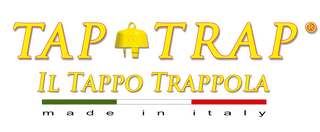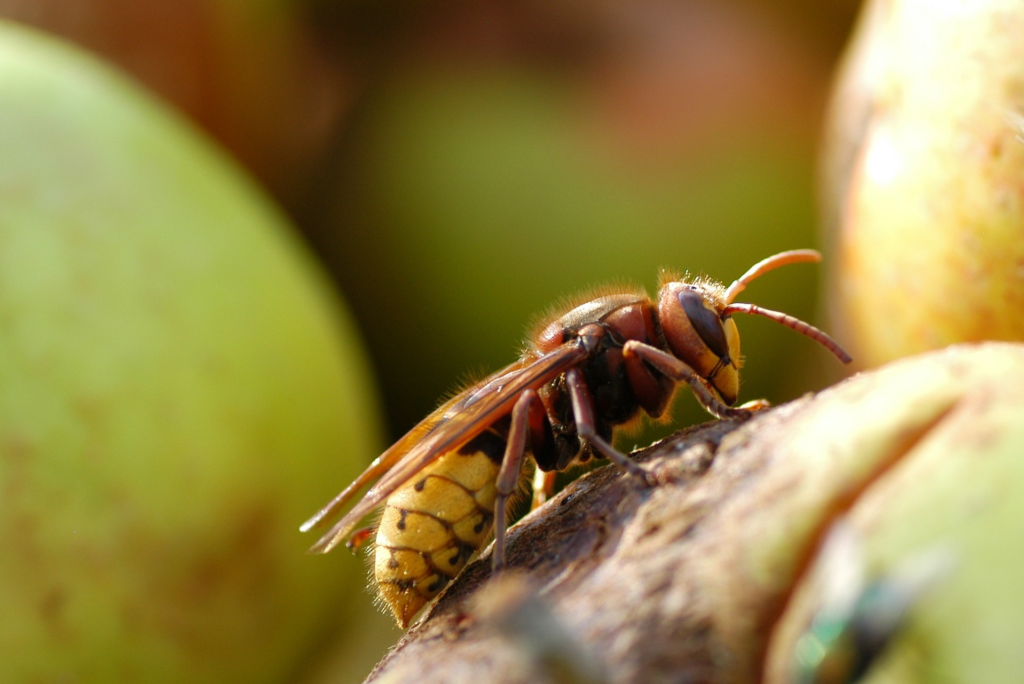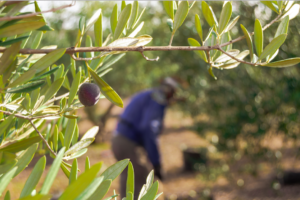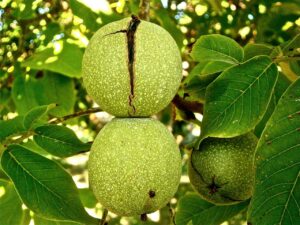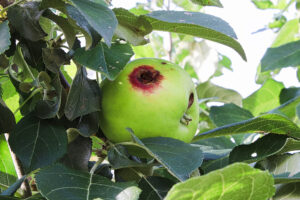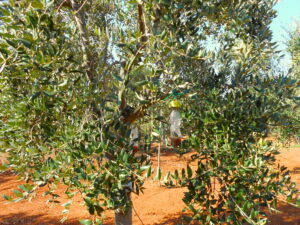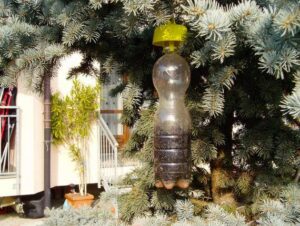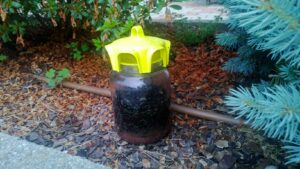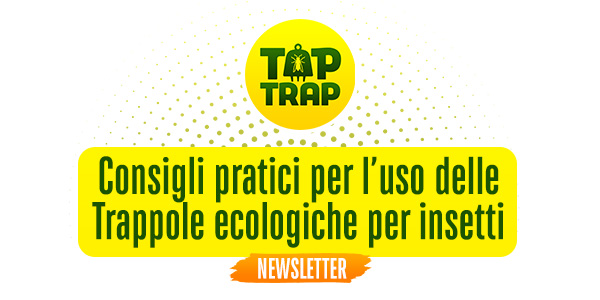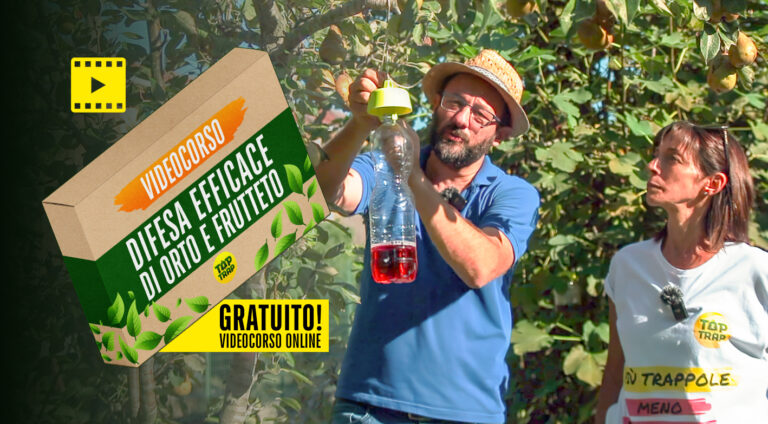We must not wait for the fruits on the trees to ripen before using bio traps if we are to prevent infestations from wasps and hornets in orchards. Rather, they must be placed in early spring so that they can effectively contribute to a reduction in the rate of reproduction of these flying pests.
With the use of bio traps Tap Trap and Vaso Trap it is possible to effectively control flying pests without resorting to – or at least reducing – the use of pesticides that are harmful to the environment as well us to our health.
Sommario
THE SECRET OF WASP TRAPS: PREVENTION
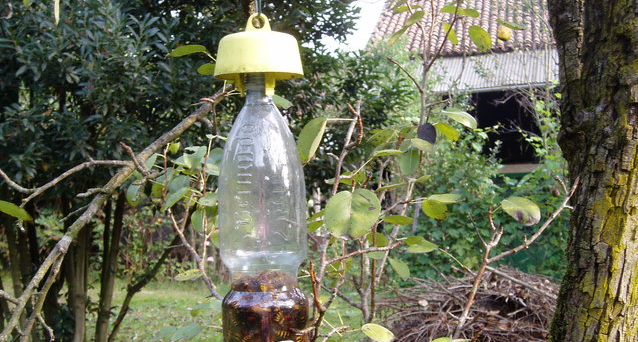
Wasps and hornets are attracted to ripe fruits: figs, apples, pears and other sugary fruits in our orchards. However, we may not be aware that placing wasp traps only when the fruits on the trees are ripe is already too late.
Stopping wasps and hornets eating the fruits of our labour is important, and these pests love the baits in our traps no less than ripe fruits. By placing the traps too late we may end up with a diminished and blemished fruit harvest, despite our bio traps being full to the brim with wasps and hornets.
The secret for the effective use of wasp and hornet bio traps then, is that they can prevent infestation if placed already in early spring.
The capture of queen wasps and hornets
The queen wasp and the queen hornet come out of hibernation on the first sunny days of spring; they are already pregnant and ready to build nests where they will lay their eggs.
In fact, they mated just before winter, before finding shelters in damp areas, such as in old abandoned nests, or underground, or in rotten tree trunks (but never in structures manufactured by human beings).

After the winter the queen wasps need to recover their strength to build their new nests, that is why in their first flights they are greedy for food and sugary substances. It is precisely at this time that the wasp and hornet bio traps need to be placed. We must bear in mind that each queen hornet can build a nest with the capacity to house between 300 and 500 – and in the worst cases even 1000 – larvae, while each queen wasp can lay up to 20,000 eggs.
By capturing a few queen hornets and wasps at the end of the winter we avoid dealing with far more of them in spring.
Orchards are not the only places inhabited by wasp and hornet populations. These flying pests make nests in unexpected places: on attic beams as well as on trees, preferring hidden cavities and quiet places, where their colonies can grow undisturbed.
HOW DO WE USE THE BIO TRAPS TO CAPTURE WASPS AND HORNETS?
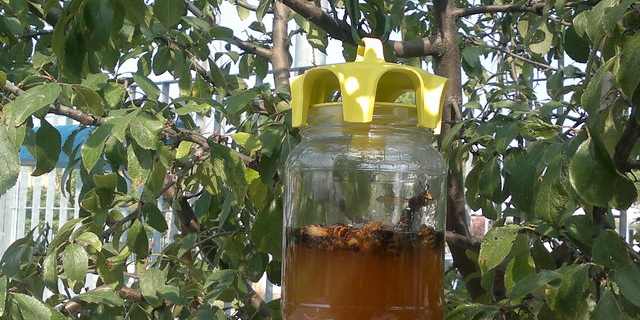
In the first days of spring when the trees have not grown their leaves back, the first visual attractant for flying insects are the bio traps. Thanks to their yellow color the insects see them from afar and approach them believing them to be fruits.
The yellow color of both Tap Trap and Vaso Trap is a necessary visual attractant for flying pests. They are used on recyclable common containers, such as plastic bottles and glass honey jars that, together with suitable home made baits, become essential parts of the traps. For further information click here.
The home-made bait for wasps and hornets
You can prepare the bait for wasp and hornets using sweet and sour substances, as for instance mixing water, vinegar and sugar: wasps and hornets associate the scent of this simple blend to the taste of ripe fruits. Another very simple yet effective bait for wasps and hornets is beer.
Once ready the bait must be poured inside the trap-containers (i.e., inside plastic bottles for Tap Trap and inside glass jars for Vaso Trap).
The effectiveness of the bait
For the bait to be effective it needs to be replaced regularly, either when the flying pests captured are many, or every 3 to 4 weeks. In each case the content of the trap must be discarded and replaced with fresh bait.
The replacement of the bait is essential for its constant effectiveness:
- With Vaso Trap it is possible to empty the jar and replace the bait.
- With Tap Trap both the plastic bottle and its content can be discarded and Tap Trap can be hooked on a new plastic bottle containing fresh bait.
The capture of flying pests begins at the beginning of the spring and only ends when the last harmful insects have stopped flying around. This means the traps must remain in place until the end of the season (October or November.)
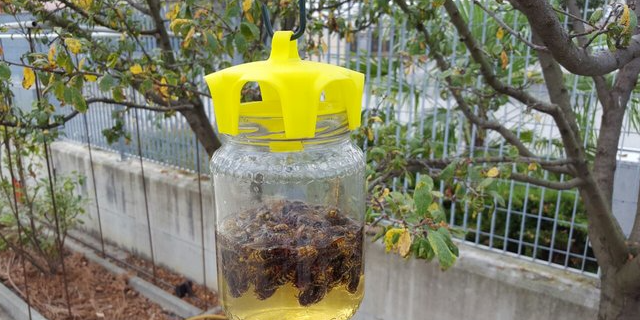
What happened if the bait is not replaced?
If the attractant substance is not replaced with a fresh one when necessary, the container of the trap becomes too full of wasps and hornets. When this happens the insects begin to disintegrate in the bait changing its initial sugary scent with an odor that is unpleasant for wasps and hornets, and attracts flies instead.
Contraindications: none
Our eco friendly insect traps respect the environment and biodiversity. When Tap Trap and Vaso Trap are used with the correct baits they present no danger for bees, bumblebees and other pollinating insects, because pollinating insects are not attracted to these type of substances.
Do not forget!
What may seem to be a poor catch in the months of March and April actually has the same value of a trap full to the brim of flying pests in July, when the fruits are ripe. In the first days of spring there are only few harmful insects in circulation, but those few can potentially give rise to a population of thousands so their capture will forestall their proliferation.
Tap Trap is used by most renown Italian beekeepers: the European project LIFE Stop-Vespa has donated funds for the fight against the Vespa velutina – a fight that has achieved excellent results through the use of Tap Trap.
USEFUL TIPS
Where to find Tap Trap and Vaso Trap for wasps and hornets
Read more
- Tap Trap: how to use it and which baits is most effective
- Vaso Trap: how to use it and which baits is most effective
Are you a beekeeper?
Do you have a vegetable garden, or simply a garden?
- Use slug pellets or similar baits safely and without poisoning the soil
This article was written and edited by
Roberto Carello and Maura Rizzo
Foto cover: @maria-anne (2018) – Pixaby
All photos, unless otherwise indicated, are Copyright Roberto Carello and Vanda Bellini
